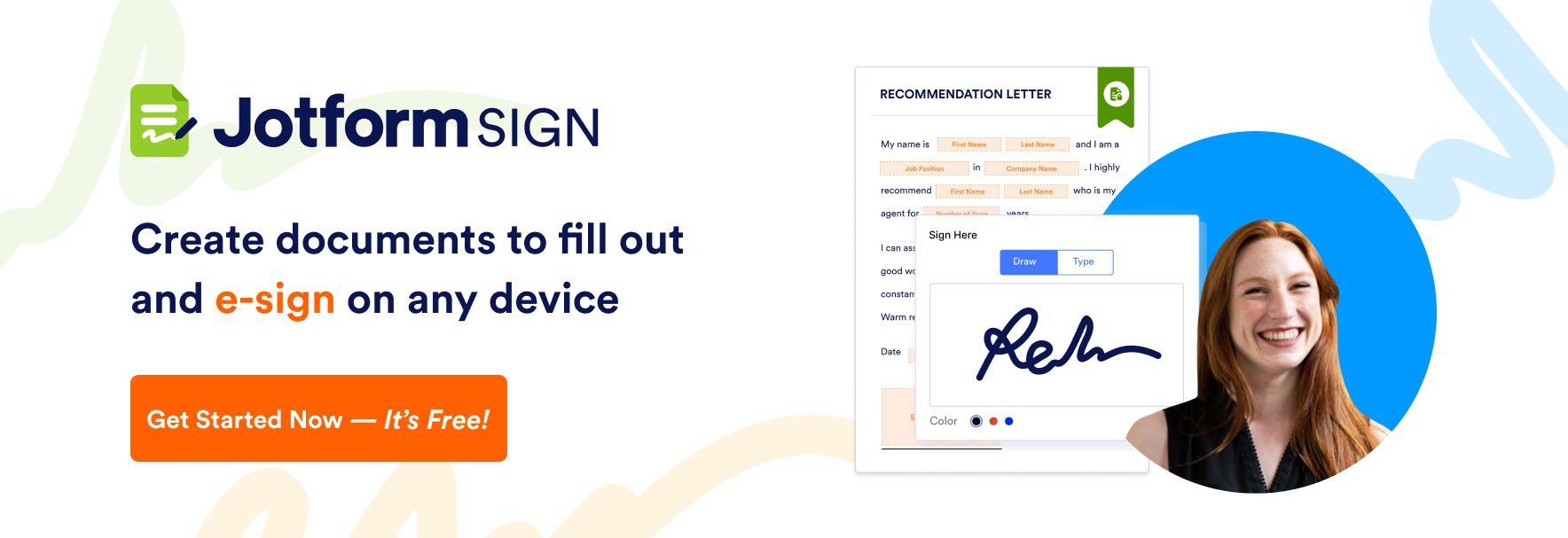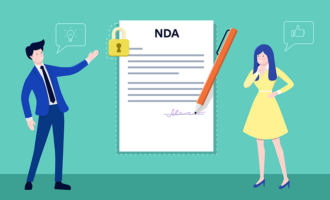The legal term “nondisclosure agreement” and the abbreviation “NDA” are often mentioned in the news. While it’s rare that a lease or a purchase order is linked to a scandal, stories about unsavory employers, celebrities, and politicians using NDAs to silence whistleblowers have become a journalistic staple in recent years.
Though NDAs have become notorious as a way to keep things like out-of-court settlements quiet, the reality is that a nondisclosure agreement is a common, legitimate, and ethical tool for businesses to keep individuals from disclosing confidential information — such as client lists, sales strategies, or products in development — that would give competitors an unearned advantage.
While an NDA is a legally “enforceable” type of contract, it’s distinctly different from other types of contracts. It’s important to understand these differences so that you can draft an NDA that supports the confidentiality you need.
Check it out…
Create your own nondisclosure agreement with Jotform Sign to collect e-signatures on any device.
How an NDA differs from other contracts
Hear the word “contract,” and the first thing that likely comes to mind is buying or selling something, whether a product or a service. Contracts like these are the legal underpinning of business, and while they can be complicated for complex business deals, every contract of this sort — from a lease to a purchase order to a corporate merger — has some basic elements.
An NDA is distinct from other contracts because there’s no exchange of a product or service for money or anything else of value. The NDA is often a precondition to a subsequent contract in which there is an exchange — but not always.
The purpose of an NDA is to protect confidential information one party has from disclosure by a party with whom they may share the information. For this reason, the party with sensitive information to protect is called the disclosing party, and the party required to sign the NDA to get access to the information is known as the recipient or receiving party.
Two types of NDAs
Most of us learned early in life that the only sure way to keep a secret is to tell no one, but that’s often impractical in business. You simply can’t recruit talented employees — particularly at the executive level — without revealing the inner workings of your organization.
It’s not unusual in such recruiting situations for the company to require the candidates for the job to sign a non-mutual NDA, also known as a unilateral NDA. This is when one party is the disclosing party — in this case the business recruiting talent — and the candidates are the receiving parties. They are required to sign the NDA to advance in the recruiting process but without any assurance they will be hired.
It usually isn’t possible to properly negotiate a potential professional partnership or the merger of two businesses unless both parties reveal detailed information. These circumstances require a mutual NDA that binds both parties to confidentiality, regardless of the outcome of the negotiations.
Elements of an enforceable NDA
An effective and genuinely protective NDA requires considerable thought, but the process begins by determining who the parties involved are, and — more specifically — who will sign the agreement. It might be necessary to have NDAs with each member of a team negotiating a deal.
Carefully list all the types of information deemed confidential that the disclosing party will share with the receiving party. This task is more complicated still when writing a mutual NDA. Detail the scope of the agreement to clarify what’s confidential and what information is excluded from the NDA. For instance, the disclosing party might want to keep its current sales data confidential but have no qualms about the receiving party talking about sales from previous years.
Last, what is the term of the agreement? Make clear in the NDA how long the receiving party is bound by the confidentiality terms. Once you’ve determined all of this, use the Jotform NDA template to draw up a legally valid agreement.
While NDAs sometimes figure in salacious scandals, in reality, these are common legal instruments with a legitimate purpose in everyday business.
Make NDAs a seamless part of your business processes with Jotform Sign
Whether you’re crafting a mutual or unilateral NDA, Jotform Sign makes creating, distributing, and signing these and other agreements a cinch. This easy-to-use e-signature solution ensures you don’t have to hunt down recipients — simply share a link and get notified when the document is signed.
Send my document for signature
File type is not allowed.
Maximum file size limit exceeded. (5MB)
Something went wrong.
With Jotform Sign, you can
- Create NDAs, agreements, and other documents with no coding. Just use the simple drag-and-drop builder to add and remove document elements.
- Sign documents easily with integrated e-signature technology. Embed as many signature fields as you need in your document template to capture the agreement of all relevant parties.
- Automate your e-signature document processes with intelligent approval flows that include internal and external parties. Add one or more reviewers to the flow — such as the department head and senior executive — so that the document is routed to the appropriate personnel before being sent to the client or other approving party.
The NDA template is your best bet for constructing a solid agreement that keeps your information safe. But other use cases may require different agreement templates:
- Confidentiality agreement. NDAs and confidentiality agreements are similar but not exactly the same — here’s how they differ. As with the NDA template, this confidentiality agreement includes boilerplate sections for you to detail the type of information you want to keep private, the extent to which the parties must protect that information, the consequences for violating the agreement, and more.
- Employee confidentiality agreement. Onboarding new managers, research associates, developers, or other workers who will need access to sensitive company information? Keep it protected with this agreement template that’s tailored specifically for employees.
- Partnership agreement. When going into business with someone else — even friends or family members — it’s essential to put in writing the particulars of your business relationship. This way everyone is on the same page when working together. This agreement includes content about partnership length, ownership percentage, management responsibilities, and more, though you can add other pertinent details to ensure a fruitful collaboration.
Customize each of these templates to include the exact language, look, and feel you need. Build a document once and send it as many times as needed. Get started with a free confidentiality agreement template today.

AS ALWAYS, CONSULT AN ATTORNEY BEFORE RELYING ON ANY FORM CONTRACT OR CONTRACT TEMPLATE. THE CONTENT ABOVE IS FOR INFORMATIONAL PURPOSES ONLY.









Send Comment: